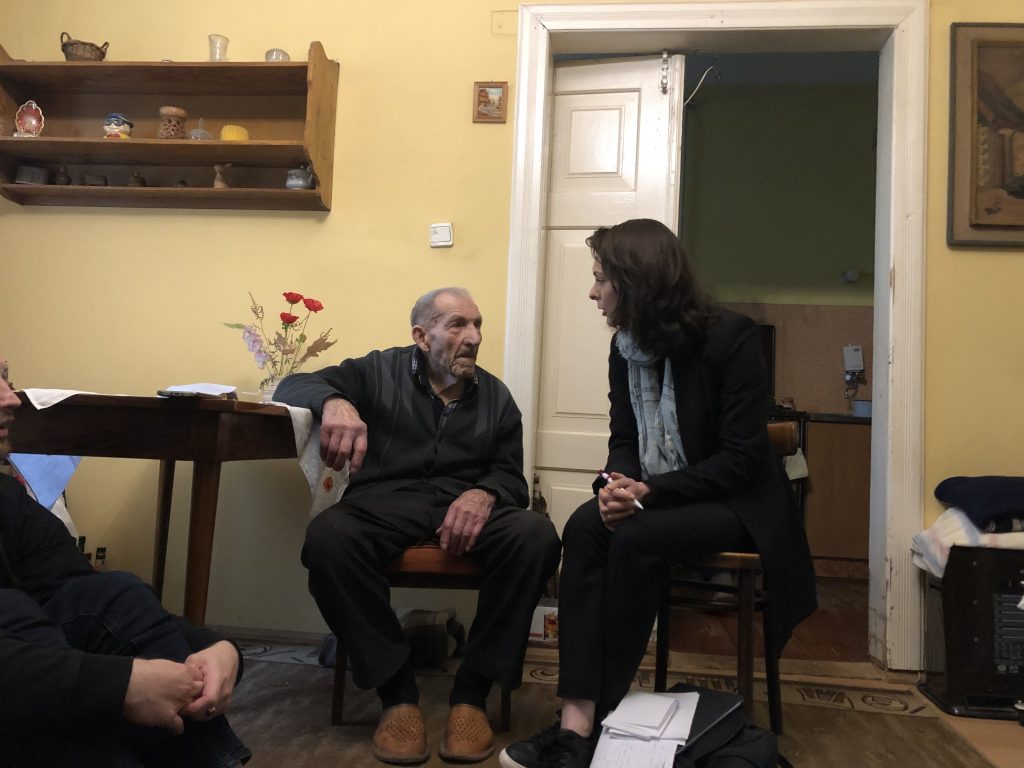I’m not sure why I trek half way across the world taking students to sites of atrocity. Many people tell me that they don’t know how I do it. My response, is: how could I not? I was born Christian, the daughter of a Protestant minister, and it was devout Christians who in many instances participated in the Holocaust as perpetrators and bystanders. Doesn’t the long history of religious violence tell us that we have to be very careful where religion in involved. The great irony is that religions can promote both love and hate. Many Germans, in fact, praised Martin Luther’s anti-Jewish writings to promote their own antisemitism during the Holocaust and justify their horrific actions. Not that’s a history lesson.
I was thinking yesterday, I’ve done this trek six times now, when do I stop? To this point the students often can’t keep up with me so physically I think I’m doing just fine. I do have the ability (and always have according to my mother) to exist without much sleep…but I don’t advise trying this at home! Pushing oneself in foreign climes strikes me as an important experience for students. (One of my students told me the study abroad trip was good practice for OCS training in the Marines! Now that one made me proud)! In hindsight there is so much to teach from a historical point of view amplified in the last two versions of this course with a focus on human geography. But beyond the history and geography lessons, perhaps the most important outcome of a class like this is to teach empathy. The Nazis didn’t attack world Jewry all at once…anti-Judaism and antisemitism were intensified over time. When we let down our guard today, when we accept rudeness, incivility, and cruelty as a matter of course, we all take one giant step towards the dehumanization of those around us. That step is just too dangerous…doesn’t the Holocaust teach us that?
For some reason I’m still struck by the man who passed us outside of Piotrkow Trybunalski while visiting a small Holocaust memorial after we met the witness Stanissalaw S. who saw Jews killed when he was a boy. The man parked his car and walked up to Renata Mansa who was with us to say he had driven by the memorial all his life but for some reason when he saw us that day he felt the need to stop and pray for the victims. He was young, probably only 35 or so, but collective memory has a way of touching many generations. The fact that he would see our class and feel compelled to confront the history of his town was powerful to me. Had we trekked to Poland for this? And I’ll never forget Elena singing the Mourner’s Kaddish at two execution sites. I reflected on that in an earlier blog post, and I thank Elena Simon for her willingness to say Kaddish for the victims; it could not have been easy. I had the overwhelming sense that the victims had been waiting for her, for us, to arrive. If that was a mitzvah, it included all of us as participants (Elena) and observers (our class and guides).
I hope in the days to come my students will reflect on their own actions in the context of what we have learned. All of us, all humans, single out others for ostracism. We note difference…it is human nature. Some of us may be more evolved and more aware of prejudice, racism, and antisemitism in our environments and we may fight it already. Maybe that isn’t the case for all; I am always learning when it comes to confronting hatred. This course should make the participants bolder in standing up for social justice, for what is right, for refusing to be a bystander when people are singled out for their color, religion, ethnic background, linguistic heritage, personal disability, sexual orientation or for the multiple reasons that humans try to divide instead of unite. The onslaught against the Jews in the 1930s didn’t begin over night. It was a long process of selective discrimination that in the end had murderous consequences. But all of us see difference, and sometimes in my own life I’ve found this course has helped me to forgive others who have hurt me, even when it was very, very difficult. I have tried to be less angry with situations and employ more empathy even when it is hard. The course has helped me to stand up for others. Building walls of separation do no good for the human story. Father Patrick Desbois says in “Holocaust by Bullets” “believing in the human race is a serious responsibility and a position that needs to be consciously created and constructed (p. 68).” Those are some of the most powerful words I have ever read, and I quote them to my students and my sons all the time. I state them here so that readers can contemplate them in the context of their own lives.
Pictured below is Stanisslaw S., a witness to atrocity and introduced to us by our colleagues at Yahad-In Unum. We also see the marvelous interpreter, Renata Masna, who taught us all a lesson in oral history interview methods. She was marvelous.

